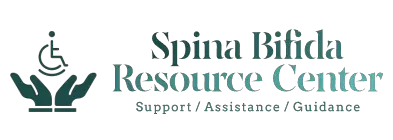Top Guide & FAQ on Neurogenic Bladder & Treatment
(Article Updated on Dec 12, 2022)
This page contains the most popular questions people have asked about Neurogenic Bladder Treatment, bladder disorders and the most important facts surrounding this medical condition that affects the bladder and kidney. On this page, you can find the answers to the most popular questions asked online, such as the known and unknown facts based on medical studies publicly available on this condition.
Neurogenic Bladder Treatment (NBT) aims to mainly control the symptoms of this medical condition, prevent kidney damage, and improve the patient’s quality of life. NBT is a type of medical treatment that is decided by a medical professional based on the patient’s age, health and medical history. The treatment of this medical issue can also include lifestyle changes, other than medical treatments. [1]
What is a Neurogenic bladder?
Neurogenic Bladder (NGB) is a medical condition when the nerves do not function the way they should. In normal cases, the muscles and nerves work in conjunction to hold and release urine at the exact moment. The nerves have the responsibility to carry messages between the bladder and the spinal cord and the brain. The messages’ function is to direct the muscles of the bladder to either tighten or release.
Children’s Hospital of Colorado made a very helpful video about Neurogenic Bladder below.
A lack of bladder control is caused by issues with the nerves that go to the bladder. This condition, known as NGB, can be the main reason for a range of bladder problems, such as the bladder filling up and overflowing with urine dribbling out and having the urge to urinate even when the bladder is not full.
With the condition of Neurogenic Bladder, the nerve problems present can keep the bladder muscles contract way too much or at the wrong time. This issue can also cause patients to urinate too often or urinate even when they don’t want to. [2]
What are the signs and symptoms of neurogenic bladder?
The signs and symptoms of neurogenic bladder are urinary tract infection (UTI), loss of feeling that the bladder is full, dribbling urine, urinary incontinence, kidney stones, small urine volume during voiding, and urinary frequency and urgency.
The signs and symptoms of this condition may also appear like other medical conditions since they are quite common. Further tests will be carried out to determine if the patient is really suffering from NGB, including tests that involve filling up the bladder to see if it can hold and check if it can fully empty itself.
One of the most troubling symptoms of NGB that affect patients is incontinence which can lead to effects like social isolation, poor hygiene, and skin breakdown. Overflow incontinence is primarily seen in patients with a flaccid bladder which can cause urine retention and constant overflow dribbling. Some male patients can also suffer from erectile dysfunction.
Other signs and symptoms are nocturia and spastic paralysis with sensory deficits for patients with spastic bladder. For this type of condition, patients can suffer from intermittent bladder contractions which can cause urine leakage. [7]
How is neurogenic bladder diagnosed?
Neurogenic Bladder (NGB) is diagnosed by a physician who takes into account the patient’s complete medical history and then performs a careful physical examination to rule out other medical issues.
In most cases, a urodynamics study is performed and radiologic testing is carried out by a medical professional. A urodynamics study can be performed by a neurologist and might also include an EMG (an electromyogram using needle electrodes) of the sphincter.
Radiologic testing consists of an ultrasound or a voiding cystourethrogram (VCUG). VCUG is a special form of x-ray known as fluoroscopy and this procedure consists of an x-ray exam of the patient’s bladder and lower urinary tract.
NGB affects more than 90% of patients suffering from spinal cord injury. This condition is also known to affect 50-80% of patients with multiple sclerosis and over 95% of patients suffering from Spina Bifida (SB).
Studies show that NGB is rarely a condition that occurs on its own. This bladder issue is almost always part of a larger problem that affects the patient. It is a common complication of SB and can also be a complication of spinal cord trauma, pelvic tumors, and tumors in the central nervous system. [8]
What are the 2 types of neurogenic bladder?
The 2 types of neurogenic bladder control problems: an overactive bladder and an underactive bladder. Based on past medical studies, there are 4 types of neurogenic bladder disorders which are flaccid or atonic bladder, uninhibited bladder, hyper-reflexive bladder, and sensorimotor paralytic bladder.
Neurogenic bladder disorders, also known as neurogenic lower urinary tract dysfunction, have been affecting more and more people and based on recent studies, there have been more cases of this condition affecting people who have gunshot wounds.
When patients suffer from a flaccid or atonic bladder, they will have urinary retention and might need an indwelling urinary catheter. This type of bladder disorder typically occurs after an acute spinal cord injury.
Patients suffering from spastic or hyper-reflexive bladder will usually have urinary incontinence urgency/frequency as this type of bladder disorder occurs due to a spinal cord injury located above the sacral two to four spinal cord levels.
Patients who have had a traumatic brain injury or suffered a stroke may get affected by an uninhibited bladder which consists of a combination of urinary symptoms like urinary frequency and urgency. This type of bladder disorder can also affect patients who have multiple sclerosis.
Patients with a sensorimotor paralytic bladder are unable to empty their bladder due to damage to their peripheral nervous system. This type of bladder disorder affects mostly patients with diabetes and neuropathic bladders. It can also affect patients who have had extensive or normal pelvic surgery, as usually in this condition there has been damage to the patient’s peripheral nervous system. [5]
Which medication is used for treating a neurogenic bladder?
The medication used for treating a neurogenic bladder can be any overactive bladder medicine, known as antimuscarinic agents for the bladder, like trospium chloride, oxybutynin, tolterodine, darifenacin, fesoteridine, or solifenacin.
These antimuscarinic agents are used as part of the medical management of Neurogenic Bladder and can effectively restrain involuntary bladder contractions that patients suffer from. The main goals of the Neurogenic Bladder treatment are to protect the upper tract from further damage, maintain urinary continence and also maintain the patient’s quality of life.
The medications used to treat Neurogenic Bladder can improve patient bladder capacity and compliance, and improve urinary incontinence. Oxybutynin is the most common medication utilized to treat neurogenic bladder as studies have shown that this medication is safe and effective in any form like syrup, tablet, transdermal and extended-release tablets and it can even be used to treat this condition in children. [3]
Can neurogenic bladder be cured?
Neurogenic bladder (NGB) can’t be cured but it is treatable and can be managed under the supervision of the right healthcare team with medication and intermittent catheterization. As part of the treatment, the bladder has to be regularly emptied using a catheter.
If there’s an infection involved, antibiotics will be prescribed. Doctors can recommend surgery to remove blocks or stones. Some patients might need botox injections in the bladder muscle. Some of them might also need to use an electric device for the purpose of stimulating or slowing bladder activity.
This is a condition that affects both children and adults. The minority of children suffering from Neurogenic Bladder may need major reconstructive surgery to treat this condition. [4]
How do you treat neurogenic bladder naturally?
You can treat neurogenic bladder naturally with bladder retention home remedies like essential oils and herbs. The most common essential oil recommended is peppermint oil, which is used to treat postpartum urinary retention in women. A few drops of peppermint oil can be dropped into the toilet water to encourage urination.
Dandelion is a wild herb that has been commonly used for centuries to treat kidney disease and upset stomach. Due to its anti-inflammatory properties, it can be used to treat bladder inflammation and retention. It is recommended to consume dandelion as a tea twice a day for satisfactory results.
Though the stinging nettle plant has been used for centuries to treat joint pain, it has also been used to relieve symptoms from urinary retention or from an enlarged prostate. It is recommended to consume the nettle root as a tea three times daily or it can also be consumed as a pill or through an extract. [6]
What is a neurogenic bladder surgery?
A neurogenic bladder surgery is to help patients who are suffering from more serious types of underactive bladder. There are many surgical treatment options available to treat this condition, including an artificial sphincter device, bladder augmentation, urinary diversion surgery, and sphincter resection.
A sphincter resection is when the weak portion or the entire muscle of the urethral sphincter muscle is removed via surgery. Bladder augmentation is when the large intestine is removed and attached to the bladder’s walls to increase the size of the bladder so more urine can be stored.
A urinary diversion surgery is a procedure where the surgeon creates a stoma (an opening) so the urine can move through the stoma to a collective pouch. An artificial sphincter is a device that treats severe urinary incontinence when the patient’s real sphincter muscle isn’t functioning correctly. This device is surgically placed around the urethra and a pump is placed under the skin in the labia or scrotum so it can open the sphincter to allow the patient to pass urine. [9]
David A. Ginsberg, MD, (Keck Medicine of USC) discusses treatment options for neurogenic bladder for women in the video below.
What are neurogenic bladder complications?
Neurogenic bladder complications are constant urine leakage, kidney damage, and urinary tract infections. Constant urine leakage can cause the skin to break down and eventually can lead to pressure sores. If the bladder becomes too full, it can cause pressure to build up in the tubes which leads to the kidneys.
Based on medical studies, patients with this condition are at risk for several urologic complications including renal failure, urinary tract infections, bladder cancer, sexual dysfunction, infertility, calculus disease, hydronephrosis, and vesicoureteral reflux.
Patients with NGB are advised to follow up with a urologist to recognize, treat, and prevent further complications from happening. [10]
What are Neurogenic Bladder Treatment guidelines?
Neurogenic Bladder Treatment guidelines are considered important tools to highlight the best practice when treating this condition in patients. Studies state that medical interventions may not necessarily restore the patient’s regular urinary function but the treatment methods used can highly improve the patient’s quality of life.
For an appropriate neurogenic bladder therapy to happen and for the patient to experience a successful treatment outcome, an accurate diagnosis including the patient’s clinical history, voiding diary, physical examination, and a range of complementary tests like urodynamics and imaging need to be carried out and performed by a team of medical professionals. [11]
Is neurogenic bladder life-threatening?
Neurogenic bladder is life-threatening as the disturbances and complications involved can become serious if this condition is not treated and managed properly. Studies show there is a variety of non-surgical and surgical management options available that are utilized by medical professionals to prevent renal impairment in patients suffering from NGB. [12]
What is Urolithiasis in adult spina bifida patients?
Urolithiasis in adult spina bifida patients is the presence of bladder stones in the bladder of patients with this type of spine birth defect. This condition can most likely occur more in patients with SB than in the population. [13]
How does spina bifida affect the urinary system?
Spina Bifida (SB) affects the urinary system as the nerves in the spinal cord that control the bladder did not form properly. Studies show that children, who are born with this birth defect, are most likely going to suffer from a neurogenic bladder disorder. With this condition, it will be difficult for the bladder to either store urine or empty itself or both.
Patients born with SB might require lifelong use of clean intermittent catheterization, which is a technique used to protect kidneys and prevent urinary tract infections. [14]
Can spina bifida cause kidney problems?
Spina Bifida (SB) can cause kidney problems since there’s damage to the spinal cord and nerves that can prevent brain signals from reaching the bladder which can then prevent the bladder from functioning properly. When the bladder cannot function properly, urine can back up into the kidneys and eventually this can cause kidney damage. [15]
What causes urinary tract stones?
Urinary tract stones are caused by a hard deposit of minerals, acid and salt that clump together in the urine. In normal cases, the stones are small and can pass through the urinary tract unnoticed. The problem usually occurs when the stones become too large causing them to block the route where urine needs to pass.
Over time, stones can develop and even grow larger as they go through the bladder, urinary tract and ureter. More often than not, stones can cause no symptoms but when there are symptoms, patients may feel severe pain in the back, ribs, hip, and abdomen. [16]
How do you treat urinary stones?
You treat urinary stones with the help of different treatments under the advice of a medical professional. If the stones are small, doctors advise waiting for the stone to pass as smaller stones can pass on their own compared to larger stones. The waiting time can be up to six weeks provided there are no infections involved or no pain felt.
If there are larger stones involved, doctors will prescribe medications or they may recommend surgery to remove the large stones from the ureter or kidney. Surgery is also recommended if the stone fails to pass or if the pain is too unbearable to wait for the stone to pass.
A urologist will recommend an x-ray to make sure no stone pieces are left behind after the surgery. The recovery time after the surgery is usually about one to two weeks. [17]
These are the most popular questions on neurogenic bladder treatment and bladder disorders that have been asked in recent times. If there’s something that you had like to ask regarding this disorder, do not hesitate to drop us a message. If there’s something you would like to ask about this content, please let us know.
References
1. Neurogenic bladder: Symptoms, Diagnosis & Treatment – Urology Care Foundation. (n.d.). Retrieved December 7, 2022, from https://www.urologyhealth.org/urology-a-z/n/neurogenic-bladder
2. The Manual’s Editorial. (2022, November 19). Quick facts: Neurogenic bladder. MSD Manual Consumer Version. Retrieved December 7, 2022, from https://www.msdmanuals.com/home/quick-facts-kidney-and-urinary-tract-disorders/disorders-of-urination/neurogenic-bladder
3. Cameron, A. P. (2016, February). Medical management of neurogenic bladder with oral therapy. Translational andrology and urology. Retrieved December 7, 2022, from https://www.ncbi.nlm.nih.gov/pmc/articles/PMC4739981/
4. Neurogenic bladder | Boston Children’s Hospital. (n.d.). Retrieved December 7, 2022, from https://www.childrenshospital.org/conditions/neurogenic-bladder
5. Newman, D. K. (n.d.). Types of neurogenic bladder disorders – Diane Newman. UroToday. Retrieved December 8, 2022, from https://www.urotoday.com/video-lectures/intermittent-catheters/video/1697-types-of-neurogenic-bladder-disorders-diane-newman.html
6. Anthony, K. (2018, July 24). Home remedies for urinary retention. Healthline. Retrieved December 9, 2022, from https://www.healthline.com/health/urine-retention-home-remedies#treatment
7. Neurogenic bladder. | Johns Hopkins Medicine. (2019, November 19). Retrieved December 9, 2022, from https://www.hopkinsmedicine.org/health/conditions-and-diseases/neurogenic-bladder
8. Neurogenic bladder. | Boston Children’s Hospital. (n.d.). Retrieved December 7, 2022, from https://www.childrenshospital.org/conditions/neurogenic-bladder
9. Neurogenic bladder. | Michigan Medicine. (n.d.). Retrieved December 9, 2022, from https://www.uofmhealth.org/conditions-treatments/adult-urology/neurogenic-bladder
10. EA;, G. (n.d.). Urologic complications of the neurogenic bladder. The Urologic clinics of North America. Retrieved December 9, 2022, from https://pubmed.ncbi.nlm.nih.gov/20955911/
11. Truzzi, J. C., de Almeida, F. G., Sacomani, C. A., Reis, J., & Rocha, F. E. T. (2022). Neurogenic bladder – concepts and treatment recommendations. International braz j urol : official journal of the Brazilian Society of Urology. Retrieved December 9, 2022, from https://www.ncbi.nlm.nih.gov/pmc/articles/PMC8932021/
12. Perez, N.E.; Godbole, N.P.; Amin, K.; Syan, R.; Gater, D.R., Jr. Neurogenic Bladder Physiology, Pathogenesis, and Management after Spinal Cord Injury. J. Pers. Med. 2022, 12, 968. https://doi.org/10.3390/ jpm12060968
13. Veenboer, P.W., Ruud Bosch, J.L.H., van Asbeck, F.W.A. et al. Urolithiasis in adult spina bifida patients: study in 260 patients and discussion of the literature. Int Urol Nephrol 45, 695–702 (2013). https://doi.org/10.1007/s11255-013-0445-8
14. Spina bifida / myelomeningocele / neurogenic bladder. UCSF Department of Urology. (n.d.). Retrieved December 9, 2022, from https://urology.ucsf.edu/patient-care/children/spina-bifida/myelomeningocele/neurogenic-bladder
15. Centers for Disease Control and Prevention. (2022, October 17). Learn about Spina bifida. Centers for Disease Control and Prevention. Retrieved December 9, 2022, from https://www.cdc.gov/ncbddd/spinabifida/
16. Urinary tract stones and treatment. Cedars. (n.d.). Retrieved December 9, 2022, from https://www.cedars-sinai.org/programs/urology-academic-practice/clinical/general/urinary-tract-stones.html
17. Kidney stones. Kidney Stones: Symptoms, Diagnosis & Treatment – Urology Care Foundation. (n.d.). Retrieved December 9, 2022, from https://www.urologyhealth.org/urology-a-z/k/kidney-stones
Old References:
- Flower CJ. Investigation of the neurogenic bladder. J Neurol Neurosurg Psychiatry 1996;60(1):6-13.
- Swartz D, Stephenson E. The neurogenic bladder in spinal cord injury. Can Med Assoc J 1957;76(6):462-5.
- [internet]. [last updated 2012 May11; cited 2013 Aug 21]. Available from: http://my.clevelandclinic.org/disorders/neurogenic_bladder/hic-neurogenic-bladder.aspx.
- Jamil F. Towards a catheter free status in neurogenic bladder dysfunction: a review of bladder management options in spinal cord injury (SCI). Spinal Cord 2001;39(7):355-61.
- [internet]. [last updated 2012 May 21; cited 2013 Aug 21]. Available from: http://www.ncbi.nlm.nih.gov/pubmedhealth/PMH0001761/.
Related Articles:
- 6 Complications of Bladder Augmentation in Spina Bifida
- Spina Bifida Urolithiasis, Kidney Stones, Urinary Tract Stones & etc
- 15 Health Care Issues for Adults living with Spina Bifida
- 6 Disorders Associated with Spina Bifida



